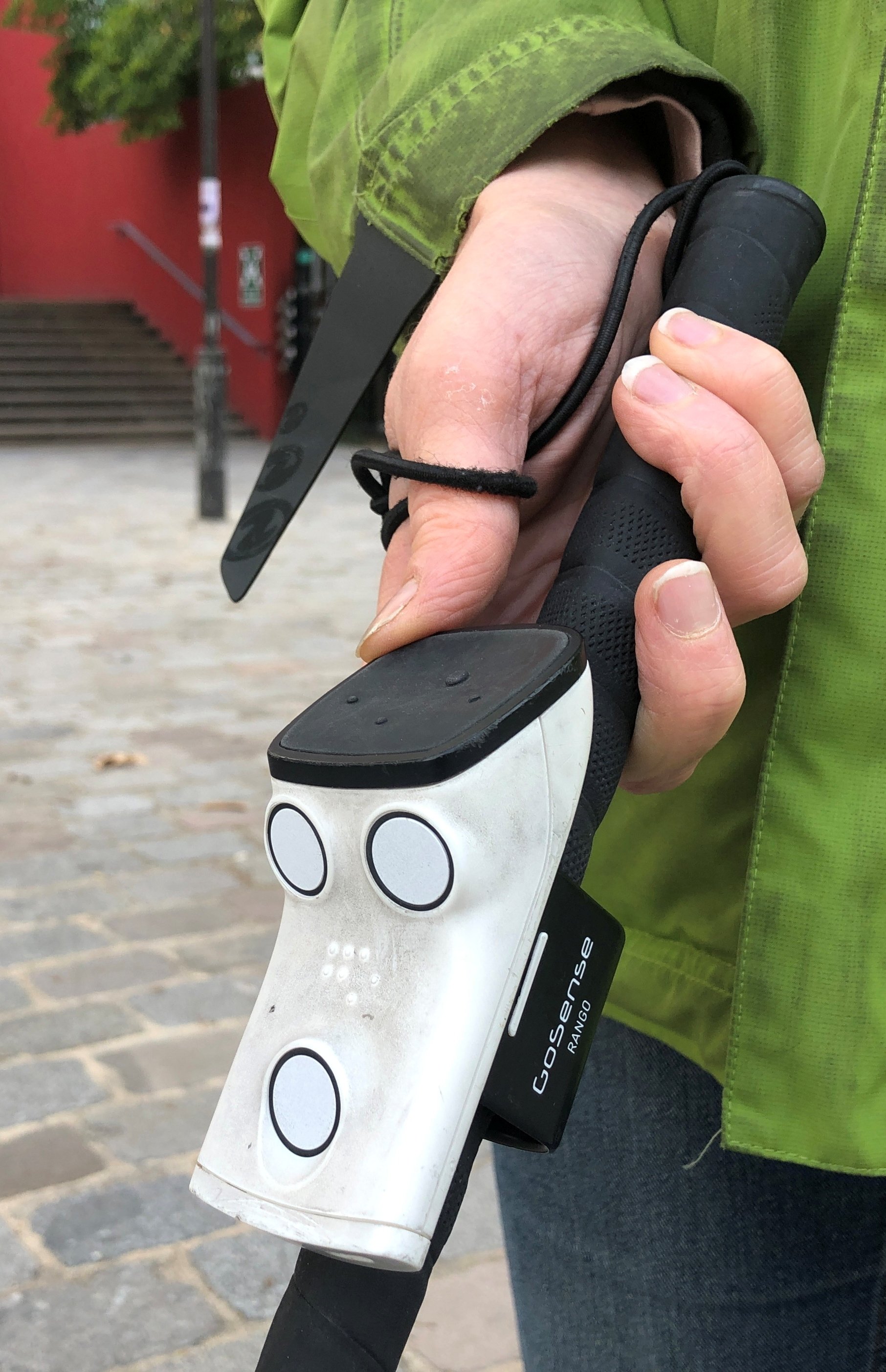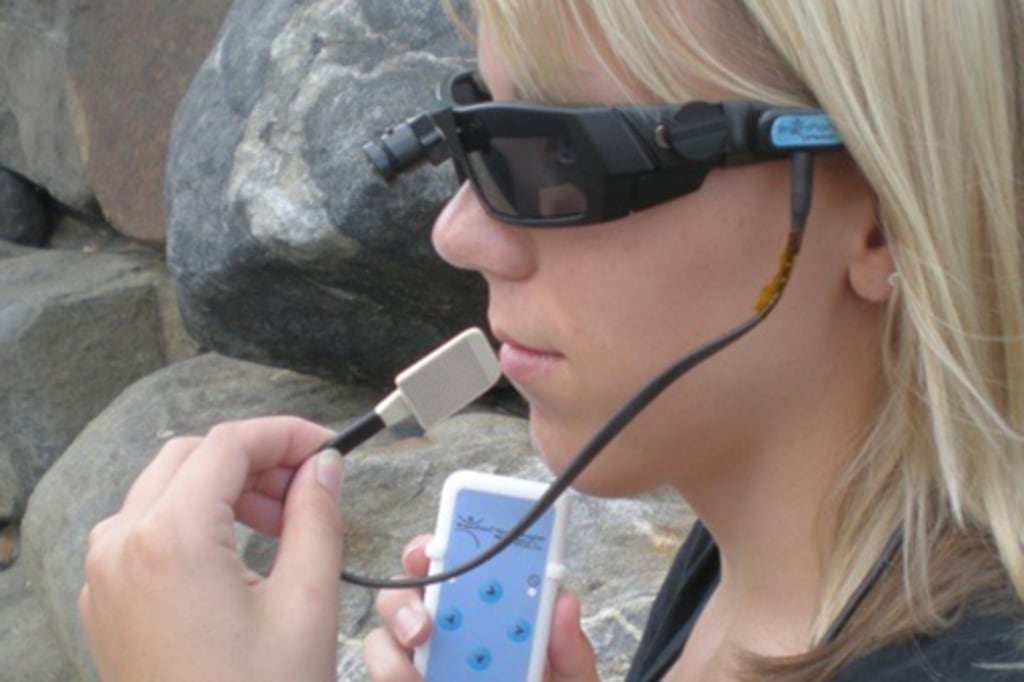Explore High-Tech Glasses for the Visually Impaired and Their Benefits
Explore High-Tech Glasses for the Visually Impaired and Their Benefits
Blog Article
Enhancing Lives With Advanced Assistive Tools for the Blind
The combination of sophisticated assistive devices for the blind is changing just how individuals experience their environments and communicate with their areas. What does this evolution mean for the future of assistive innovation and its role in empowering individuals?
Introduction of Assistive Instruments
Assistive devices for the blind include a diverse series of devices and innovations designed to boost self-reliance and enhance the lifestyle for people with visual impairments. These devices satisfy different needs, from navigation and movement to interaction and day-to-day job monitoring.
Among the main classifications of assistive tools includes flexibility help, such as white canes and overview pet dogs, which help individuals navigate their environments securely. Digital traveling help, equipped with sensing units and audio comments, likewise play a substantial duty in wheelchair improvement.
In addition, gadgets that assist with day-to-day living activities, such as flexible cooking area tools, Braille labels, and chatting watches, equip individuals to perform tasks independently. Interaction aids, including screen viewers and Braille displays, assist in access to details and allow people to engage properly with the digital world.
Additionally, low-tech solutions like magnifying glasses and large-print products remain crucial for many customers. Collectively, these assistive devices offer not just as practical tools however additionally as essential enablers of freedom, fostering greater involvement in a globe that typically prioritizes sighted experiences. Their combination into every day life is crucial for promoting inclusivity and boosting overall health for those with visual problems.
Innovative Technologies in operation
Advancement in technology has significantly changed the landscape of devices available for individuals with aesthetic impairments. Among the most remarkable improvements are wise glasses integrated with increased truth, which supply real-time navigation help and object acknowledgment. These devices take advantage of advanced cameras and man-made knowledge to provide auditory cues, enhancing the customer's spatial understanding and freedom.
Furthermore, mobile applications have actually arised as powerful sources, making it possible for customers to recognize currency, read message aloud, and navigate strange settings with spoken guidelines. Tools such as Braille display screens and refreshable Braille tools continue to develop, supplying smooth connectivity with mobile phones and computer systems, consequently improving interaction and access to info.
Wearable technology, including smartwatches outfitted with voice-activated functions, even more empowers users by helping with quick accessibility to notifications and signals without needing visual involvement. Tactile maps and 3D printing are additionally obtaining traction, using tangible depictions of spaces that aid in alignment and movement training.
Jointly, these cutting-edge innovations not just enhance the every day lives of visually damaged people however additionally foster better freedom, inclusivity, and interaction with the more comprehensive community, thereby reshaping assumptions of access. (Assistive technology for the blind)
Personal Stories of Empowerment
Empowerment commonly emerges from personal experiences that highlight the transformative effect of technology on individuals with visual impairments. Take, for example, the story of Sarah, a young musician who regained her enthusiasm for paint via the use of a smart walking stick furnished with obstacle detection. This device not only facilitated her flexibility however instilled a newly found confidence, allowing her to browse public rooms independently directory and seek her creative ventures.

These narratives emphasize the extensive impacts that advanced assistive gadgets can carry life. By enabling people to overcome barriers, innovation promotes a sense of freedom and self-respect. Such empowerment tales work as a testimony to the potential of innovation, highlighting exactly how the right tools can dramatically improve lifestyle and open doors to brand-new opportunities for those with visual impairments.
Benefits of Advanced Solutions
The integration of advanced technology into assistive tools significantly transforms daily experiences for those affected by vision loss. Smart glasses for the visually impaired. Tools such as smart walking canes equipped with sensors, navigation applications, and wearable technology are made to give real-time responses, improving spatial recognition and decreasing the threats associated with flexibility.
Furthermore, advanced assistive technologies foster social incorporation by helping with click to read communication and communication. Voice-activated devices and apps permit people to access information and involve with their environments independently, breaking obstacles that formerly impeded their involvement in academic, expert, and social setups.
Furthermore, the modification and versatility of these options accommodate the varied needs of customers, thereby improving their general top quality of life. Enhanced capability, such as item recognition and text-to-speech capacities, empowers people with visual disabilities to carry out tasks that they may have once located testing. Ultimately, progressed assistive innovations not just boost freedom and safety and security however additionally promote dignity and self-regard, permitting users to lead fulfilling lives.
Future Fads in Assistive Technology
As innovation remains to evolve, the landscape of assistive devices for the blind is positioned for amazing developments that will certainly better enhance ease of access and self-reliance. Arising fads in assistive technology indicate a change toward raised combination of expert system (AI) and maker understanding, allowing tools to adjust to specific user needs in real-time. These technologies are anticipated to promote even more intuitive navigation systems that can determine barriers and give audio responses, considerably enhancing exterior movement.
In addition, the growth of wearable tech, such as wise glasses outfitted with increased reality, will certainly permit customers to receive contextual info regarding their environments, therefore enhancing their spatial understanding. Improvements in haptic technology promise to produce responsive responses tools, allowing customers to regard information through touch, enhancing learning and communication with their setting.
Telecommunication advances are additionally leading the way for remote assistance options, where skilled professionals can give assistance by means of video clip calls, making sure visit our website assistance is conveniently available. As these patterns unravel, the future of assistive tools for the blind will most certainly cultivate better freedom, equipping people to browse their globe with confidence and ease.

Final Thought
The combination of advanced assistive tools for the blind represents a significant advancement in cultivating freedom and boosting lifestyle. By utilizing ingenious modern technologies, these tools equip individuals to browse their settings with greater confidence and autonomy. As the field remains to progress, continuous r & d will likely yield much more innovative services, additionally changing the lived experiences of people with aesthetic problems and promoting a greater feeling of incorporation within society.
The combination of innovative assistive gadgets for the blind is transforming just how individuals experience their surroundings and connect with their communities. The combination of innovative modern technology into assistive devices considerably changes daily experiences for those influenced by vision loss.As innovation continues to evolve, the landscape of assistive devices for the blind is poised for exceptional improvements that will certainly additionally boost availability and freedom. Arising fads in assistive technology show a shift towards increased assimilation of synthetic intelligence (AI) and equipment understanding, allowing tools to adapt to private customer requires in real-time.The combination of innovative assistive devices for the blind represents a substantial innovation in fostering independence and improving high quality of life.
Report this page